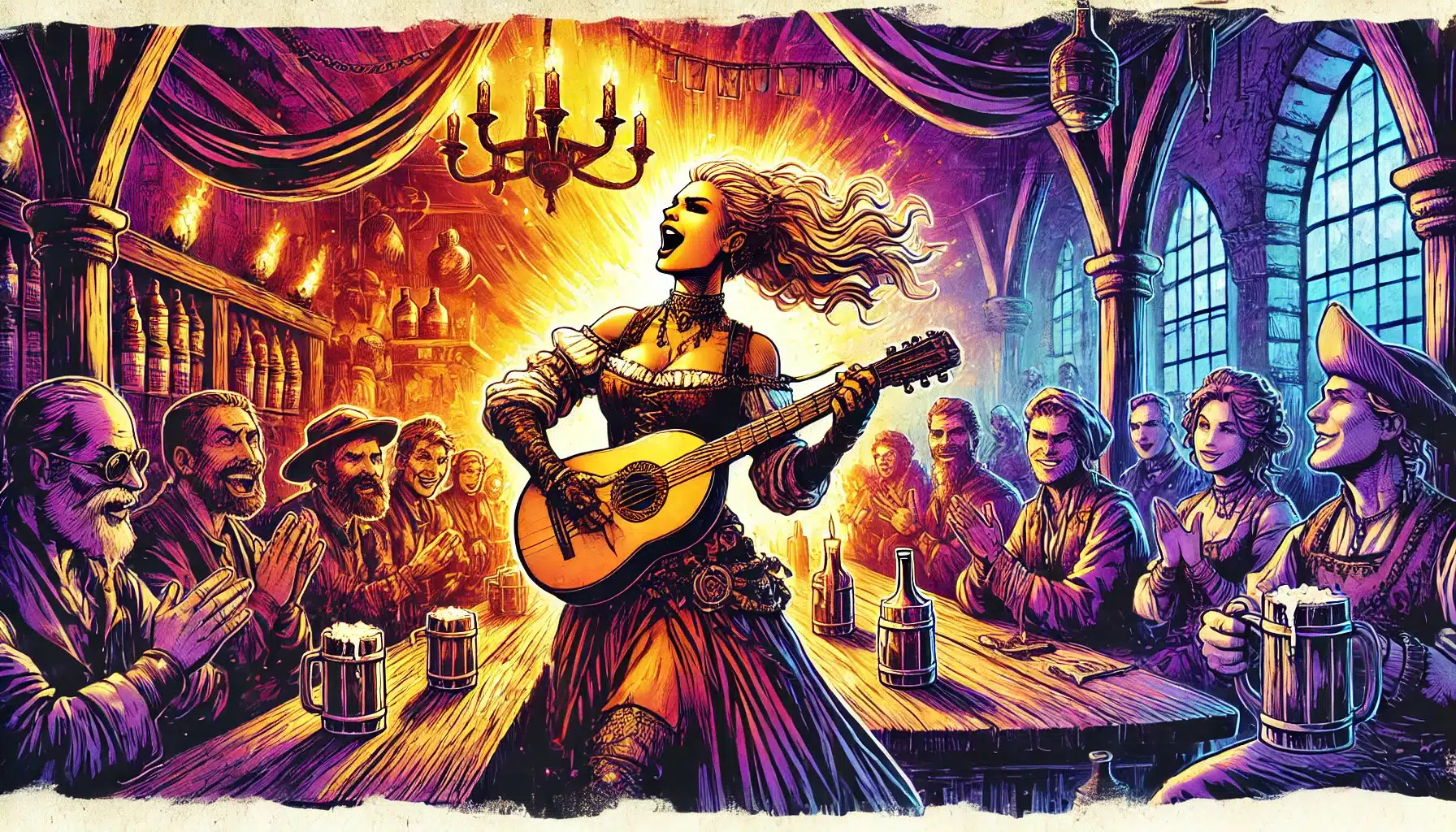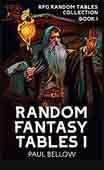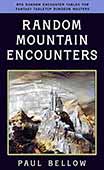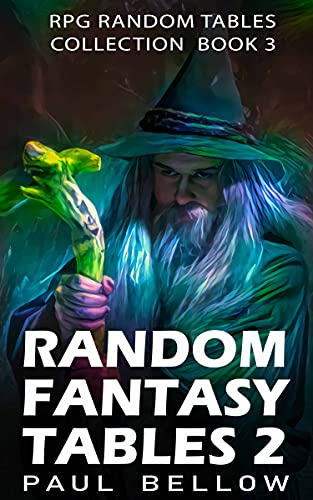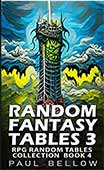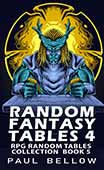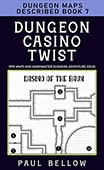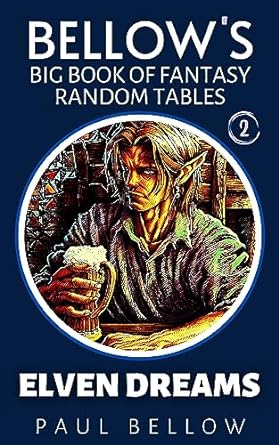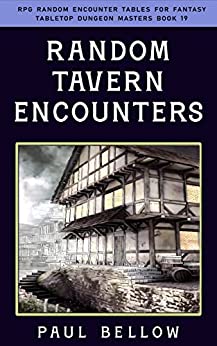In the realm of Dungeons & Dragons, storytelling unfolds in a world only limited by imagination. Here, music becomes more than just an accessory; it’s a powerful tool to build emotions and immerse players in the expansive narrative. Imagine the low hum of a suspenseful score as adventurers step cautiously into an eerie crypt. It’s a soundtrack that does more than fill silence—it crafts an audible landscape that is as vivid as the visual one painted by the Dungeon Master’s words. A robust, swelling composition during a climactic battle scene can turn a sequence of dice rolls into a heart-pounding saga worthy of epic retelling.
The tone of a D&D game is often shaped by its musical backdrop. A cheerful tune can evoke feelings of warmth and camaraderie as the party enjoys a quiet night at the tavern, while a haunting melody might underscore the sinister presence lurking within ancient ruins. Music enhances key moments, transforming them into unforgettable experiences etched into the players’ minds. It’s those goosebump-inducing crescendos or the quiet whispers of a fading motif that set the stage for dramatic revelations, unexpected betrayals, and poignant farewells.
Different types of music have varied effects on player emotions and engagement. Symphonic scores can evoke grandeur and heroism, while ambient tracks might inspire calm or trepidation, depending on their tone. By carefully selecting tracks that resonate with the mood of a scene, Dungeon Masters can subtly guide players’ emotional journeys, making each session not just an intellectual exercise of strategy and roleplay, but an emotional voyage as rich as any life experience itself.
The Role of Music in D&D Campaigns
Music is not merely an accompaniment to storytelling in Dungeons & Dragons—it’s a core component that enhances narrative richness and emotional depth. In campaigns, music can become a backdrop that helps frame the narrative’s mood and guides player immersion. For instance, ambient soundscapes might transform a simple forest into a living, breathing ecosystem, where the rustling of leaves and distant calls of owls create an authentic sense of place. Players are drawn deeper into the story, their imaginations fuelled by the auditory cues that suggest what their characters might see and feel.
The impact of background music on storytelling cannot be overstated. For instance, a haunting violin piece might underscore a character’s tragic backstory as it unfolds through roleplay, adding layers of poignancy. Enhancing scenes with carefully chosen tracks helps maintain the players’ emotional engagement, making their reactions instantaneous and visceral. During critical battles, a dynamic score that ebbs and flows with the action can turn combat into an epic showdown, where each move and counter-move is a dance choreographed in perfect harmony with the music.
Music also influences the player experience beyond mere atmospheric enhancement. The right track at the right moment can amplify emotions, elicit unexpected reactions, and elevate the plot from a simple narrative to an immersive adventure. Take a scene in which heroes rally to defend a village under siege; the right soundtrack can transform it from a tactical encounter to a moment of communal bravery and sacrifice, giving weight to their actions and decisions.
Try my AI Tabletop RPG generators...and an extensive library of content!
To create varied moods throughout a campaign, Dungeon Masters must consider the full spectrum of musical elements available: rhythm, tempo, and instrumentation all play pivotal roles. A high-tempo, percussion-driven piece can increase the adrenaline during chase scenes or intense negotiations. Conversely, a soft, melancholic piano solo might be perfect for moments of introspection or sorrow. Understanding these dynamics allows for a more nuanced and finely honed experience, one that resonates uniquely for each group of players.
Choosing the Right Music for Your Campaign
Selecting the right music for a campaign requires thoughtful consideration of the game’s setting, themes, and tone. Different genres and styles of music will naturally align with different campaign environments. A high-fantasy setting might benefit from orchestral scores reminiscent of epic sagas, while a gritty, urban adventure could find its perfect match in modern, electronic compositions. Unique musical choices can set the scene before a single word is spoken.
Sometimes, it’s about matching the tempo and energy of the music to the action on the table. Fast-paced tracks can heighten the stakes during combat or chase scenes, while slower, more deliberate pieces enhance the tension in a puzzle room or during a negotiation. Here’s the thing: instrumental tracks often work best because they underscore the action without distracting from the game, letting players focus on the narrative unfolding before them.
Incorporating leitmotifs can also be a powerful technique. These recurring musical themes are tied to specific NPCs, factions, or plot devices, creating a sense of continuity and recognition for players. Imagine the ripple of suspense as a familiar villain’s theme begins to play—even before she steps into the narrative spotlight again. Such tactics not only enhance immersion but also allow players to become intuitively aware of narrative cues.
⚔️ Fantasy RPG Random Tables Books
Make life as a Gamemaster easier…
If you play Dungeons & Dragons, Pathfinder, or other fantasy RPGs, this
RPG random tables series
is packed with encounters, NPCs, treasure, and more. Available in eBook or print—either way, you’ll have a wealth of adventure ideas at your fingertips.
Here are some practical tips for selecting the right music for your campaign:
- Match the tempo to the action on the table.
- Use instrumental tracks to maintain focus on narrative.
- Incorporate leitmotifs for significant NPCs or factions.
- Tailor music to fit the campaign setting and theme.
- Vary genres to keep the soundtrack fresh and engaging.
- Use soundscapes to create authentic settings.
- Match musical intensity to the scene’s emotional stakes.
- Leave some moments silent for dramatic effect.
- Avoid lyrics that might distract from the game.
- Don’t be afraid to experiment with unexpected music styles.
Music selection may seem daunting at first, but it becomes intuitive over time. As Dungeon Masters familiarize themselves with their campaign’s needs, they can refine their playlist to suit every mood and moment. By mirroring the narrative’s ebb and flow, music becomes not just a tool, but an ally in the storytelling process.
Creating Playlists for Different Scenes
The process of organizing music into playlists is crucial to maintaining narrative flow and emotion in a D&D session. By curating playlists, Dungeon Masters can ensure that each scene transitions smoothly from one to the next, maintaining player immersion. Exploring playlists, for instance, could include serene melodies or nature-inspired soundscapes, inviting players to lose themselves in the expansive wilderness.
Combat playlists, on the other hand, often brim with intense and rhythmic tracks designed to match the adrenaline of dice-aided battles. Such tracks can enhance the game’s fast-paced tactics, making each roll of the die feel like the decisive moment it actually is. The quick shift in tempo and tone signals a shift in narrative stakes, keeping players on the edge of their seats.
Roleplay playlists demand a different approach—one that allows room for dialogue and interaction while still providing subtle musical cues. Neutral, ambient scores can underscore diplomatic negotiations or deep character interactions. The goal here is to support without overwhelming, allowing character stories to unfold naturally.
Dramatic moments deserve their playlist, defined by emotionally resonant pieces that carry significant weight. Whether it’s the revelation of a character’s secret, a high-stakes decision, or a moment of loss or victory, these musical cues attempt to amplify the players’ emotional investment, making memorable moments that resonate long after the session ends.
| Scene Type | Recommended Music Style | Example Tracks | Tips for Effective Use |
|---|---|---|---|
| Exploration | Ambient/Ethereal | “Mystic Forest” by Composer X | Use natural soundscapes |
| Combat | Epic/Intense | “Battle Cry” by Composer Y | Match track intensity to battle size |
| Roleplay | Minimalist/Soft | “Gentle Strings” by Composer Z | Ensure music doesn’t overshadow dialogue |
| Dramatic Events | Emotional/Swelling | “Resolution” by Composer A | Change tracks as tension builds |
| Tension | Suspenseful/Quiet | “Whisper of Fear” by Composer B | Vary volume for added effect |
Creating playlists tailored to the overarching needs of a session can be a bit of an art. But even a simple change-up of music style or volume can have profound impacts, infusing each scene with its unique brand of intensity and emotion. Allow yourself to experiment—select tracks that you think might work, and adjust based on player response.
As Dungeon Masters become more adept at music selection, they may find themselves experimenting with different styles and mixing music in unexpected ways. Such creativity often leads to the discovery of new and unique ways to enrich the gaming experience, celebrating the boundless possibilities that music can bring to the world of Dungeons & Dragons. Mixing music for scenes like multiple layers in a painting encourages players to engage with each campaign more deeply, creating a symphony of interaction, emotion, and immersion.
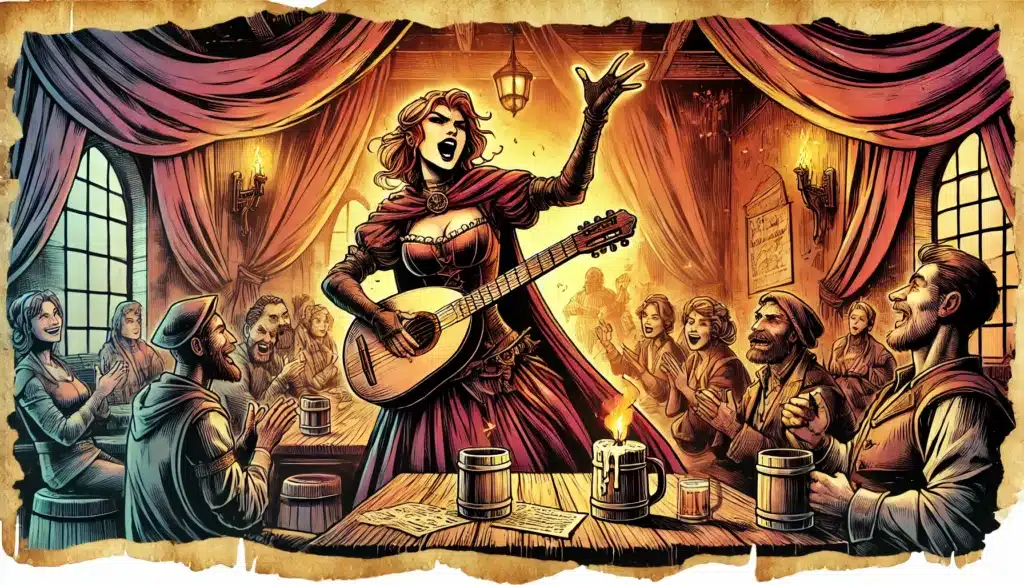
Using Music to Build Tension and Emotion
Music possesses the unique ability to build tension and evoke emotion, enhancing the drama that unfolds around the D&D table. Through an understanding of how audio dynamics can manipulate a scene’s atmosphere, Dungeon Masters craft unforgettable experiences. As players inch closer to uncovering a hidden plot or caress the thrill of an unexpected twist, the right soundtrack can wrap them in a cocoon of suspense that seeps into their real-life senses.
One way to employ music dynamically is to control its volume to match the development of the scene. Lowering the music’s volume can increase tension, allowing players to notice subtle auditory cues and focus on soft-spoken dialogue or spatial details. When sudden silence erupts after a churning melody, the subsequent shock can land with gut-punching impact. This kind of precision manipulation can transform simple happenings into experiences fraught with emotional resonance.
Foreshadowing pivotal events through music can also be immensely effective. Introducing a theme earlier in the campaign, perhaps during a peaceful moment, and then building upon it in later scenes as the tension mounts creates familiarity and unease. Consider how a simple harpsichord tune during a routine encounter turns sinister when echoed during a character’s nightmarish dream sequence. The anticipation created through these cues can ratchet up the emotional stakes until players find themselves living with bated breath, waiting for the next development.
Another dimension is to adapt tracks based on player actions. Actions that pivot away from expected outcomes might call for an unexpected shift in music. A celebratory tune turned ominous in response to a morally questionable decision or an abrupt cut to silence can emphasize the magnitude of the choice made. This interaction between player agency and music can make decisions feel weighty, as players realize their choices shape the narrative soundtrack as much as the world itself.
⚔️ Fantasy RPG Random Tables Books
Make life as a Gamemaster easier…
If you play Dungeons & Dragons, Pathfinder, or other fantasy RPGs, this
RPG random tables series
is packed with encounters, NPCs, treasure, and more. Available in eBook or print—either way, you’ll have a wealth of adventure ideas at your fingertips.
Here are some ways to use music dynamically:
- Lower volume to build tension and draw attention to subtleties.
- Sudden silence can be used for impactful shocks.
- Introduce leitmotifs early for future emotional use.
- Use minor keys to evoke ominous or melancholy tones.
- Switch to unexpected tracks for significant player choices.
- Gradually increase volume to mirror rising stakes.
- Return to familiar themes to heighten emotional scenes.
- Use varying instrumentation to suggest shifts in mood or setting.
- Employ musical cues for “aha” moments.
- Directly contrast music with scene to create irony or tension.
As you experiment with these techniques, you’ll find that music can be an advocate for emotion—carefully deployed to enrich the theater of imagination. It turns simple scenes into artistic expressions and the shared story into an epic saga, where every note reinforces the narrative’s overarching journey. Embracing this power puts music in tandem with storytelling, ensuring that the emotional tapestry woven extends far beyond a single game night.
Sound Effects and Ambient Noise
Incorporating ambient sounds and effects adds another layer of immersion to D&D sessions, translating the world in your players’ imaginations into an auditory feast. From the subtle background noise of waves crashing onto a shore to the cacophony of a busy marketplace, these elements can captivate a player’s senses, making environments come alive in unexpected ways.
Ambient sounds act as sonic cues that breathe life into scenes. The crackling of a fireplace in a cozy tavern invites warmth, while distant thunder signifies incoming storms, creating tension or urgency. Even subtle additions, like the rustling of leaves in a forest or the faint echo of dripping water in a cavern, can transform static descriptions into vibrant, three-dimensional spaces.
These soundscapes don’t just set the scene—they also provide contextual information and lead players through narrative arcs. The sound of distant battle might foreshadow imminent danger as players approach a besieged fortress. By layering these auditory hints with the descriptive narrative, Dungeon Masters enhance the depth of the storytelling, increasing engagement and anticipation.
When integrating ambient noise, balance is key. Too much can overwhelm, while too little may not cross the threshold of impact. Aligning sound variety with the narrative’s rhythm helps modulate this auditory experience. Using a mix of sound effects in moderation ensures that each one lands effectively, signaling what players need to experience without overshadowing their active participation in storytelling.
| Ambient Sound Category | Best Use Cases | Example Sources |
|---|---|---|
| Nature | Outdoor settings, exploration | Open FOREST, Nature Soundscapes |
| Urban | Towns, markets, city scenes | Urban Ambience, Sound Vault |
| Battle | Combat situations, sieges | Epic War Sounds, Audio Assault |
| Tavern/Crowd | Social hubs, public encounters | People & Pubs, Sound Symphony |
| Weather | Set mood, dramatic context | Stormy Weather, Raining Hues |
| Dungeon/Cave | Exploration, mystery settings | Echoes & Caverns, Depth Sound |
Ambient sounds, when used sparingly, are a touchstone that adds layers to gameplay, grounding the fantastical elements in an acute, almost tangible reality. By strategically selecting sounds to accompany scenes, Dungeon Masters can evoke the sense of place integral to vivid storytelling, compelling players to listen as attentively as they roleplay.
The choice to weave sound effects into a D&D session is, itself, a form of art, blending into the role of maestro conducting a symphonic narrative. As much as the dice dictate fate, the sounds set the stage, enchanting both storyteller and listeners, pulling them into a tapestry colored by more than just imagination. The result is an unbroken narrative cadence, where the roll of thunder or the clang of a blacksmith’s hammer resounds synchronously with the emerging tale.
Try my AI Tabletop RPG generators...and an extensive library of content!
Practical Ways to Integrate Music into Your Game
Integrating music into a D&D session doesn’t have to be a cumbersome task. Embracing tools and techniques for managing music allows Dungeon Masters to focus on the story while enhancing mood and setting with a well-timed soundtrack. Setting up a systematic approach to music integration paves the way for seamless transitions and enhances the immersive experience.
Technology offers various platforms to help organize and play music efficiently during games. From apps designed for tabletop gaming to more conventional digital music services, Dungeon Masters today have a plethora of options at their disposal. Knowing which tools align best with your needs can save time and effort, allowing the narrative to flow unimpeded by technical snags.
Just as a wizard may consult a grimy scroll, Dungeon Masters can look to tutorials, guides, and community forums to gain insights into best practices for music integration. By tapping into shared wisdom, they can discover innovative ways to use software features and troubleshoot challenges. This shared knowledge fosters creativity, enabling the creation of soundscapes that are as unique as they are compelling.
Ultimately, the goal is to treat music as an integral part of the D&D storytelling toolset—every bit as crucial as plot, character development, and strategy. By honing music integration skills, Dungeon Masters can transform sessions into holistic experiences where sound and storytelling intertwine seamlessly, leaving players eagerly anticipating the next note in their epic saga.
Digital Tools and Platforms for Music Management
Managing music during D&D sessions is increasingly convenient with a variety of digital tools and platforms. These resources enable Dungeon Masters to curate and control their musical repertoire effectively, ensuring that their narratives are always backed by the perfect soundtrack. For example, Syrinscape provides a dynamic solution tailored to D&D, with ambiance and sound effects designed specifically for tabletop gaming. Its intuitive interface allows for the crafting of atmospheres that change fluidly with the narrative.
Spotify, known for its vast library of music, can be harnessed for extensive playlists covering all conceivable moods. DMs can easily create a collection of tracks to suit every scene they might envision. While it requires a more hands-on approach in crafting playlists, the sheer variety makes it an invaluable resource.
On the other hand, Tabletop Audio offers a wealth of pre-generated soundscapes perfect for specific settings, from tranquil grasslands to bustling spaceships. Its user-friendly system allows for quick searches and selection, delivering background audio that seamlessly enhances any game world.
Through these platforms, music becomes an accessible tool, offering DMs the ability to elevate storytelling to an art form synonymous with any master composer. And while these tools provide a robust starting point, exploring lesser-known apps and software might lead to the discovery of hidden gems that introduce new dynamics into sessions.
Here are some recommended platforms for managing music:
- Syrinscape: Offers tailored soundscapes for D&D.
- Spotify: Extensive music library, customizable playlists.
- Tabletop Audio: Pre-generated soundscapes for various settings.
- Ambient Mixer: Customizable ambient sound generators.
- Rolz: Online RPG dice roller with built-in soundboard.
- Soundtale: Provides dynamic audio for live roleplaying games.
- YouTube: Reliable for finding user-generated playlists.
- Battle Bards: Focuses on fantasy and RPG audio tracks.
- Sirens: Escape: Mobile app for sound management in games.
- Incompetech: Offers royalty-free music suitable for D&D sessions.
Exploring these platforms unveils endless possibilities, allowing Dungeon Masters to paint the airwaves with sound as deftly as they craft their stories. Whether selecting a specific platform or integrating several, the key is to embrace what works with personal style and narrative goals, always mindful of players’ experiences and feedback.
Consistency and experimentation are critical in mastering digital music tools. As familiarity grows, the focus will shift from operation to inspiration, allowing Dungeon Masters to fill their sessions with resonant sound appropriately matched to their narrative’s heartbeat.
Live vs. Pre-Recorded Music in Sessions
Choosing between live and pre-recorded music during a D&D session can significantly impact the atmosphere and player engagement. Both styles offer distinct advantages and present unique challenges that can shape the way a narrative unfolds. Incorporating live music, such as a bard’s gentle strum on a lute or improvised flute melodies, can provide incredible spontaneity and fluidity. There’s something enchanting about the organic adaptability of live performance; it reacts dynamically to every shift in mood, event, and interaction with players in real-time.
However, crafting such a vivid live soundtrack demands skill—not every Dungeon Master might possess the musical prowess or confidence to execute it. Nevertheless, those who embrace live music find it can create an unparalleled level of intimacy and immediacy. Yet, logistics and time constraints can often make relying solely on live music impractical for many.
Pre-recorded music, conversely, offers consistency and ease. Dungeon Masters can build playlists tailored to specific plot lines, ensuring the music always complements the scene perfectly. This method allows DMs to concentrate fully on gameplay rather than multitasking as conductor and storyteller. On the flip side, pre-recorded tracks can sometimes lack the immediacy or personalized connection live music affords, making transitions during unexpected in-game events occasionally feel less seamless.
A middle-ground approach is the use of AI-generated music which presents a fascinating blend of responsive yet pre-set compositions. These tracks adapt in real-time based on in-game actions, offering a novel alternative to traditional soundtrack methods. While occasionally limited in musical variety, AI tracks provide dynamic accompaniment, adjusting to the highs and lows of gameplay without manual effort.
Here’s a table comparing live music, pre-recorded music, and AI-generated music:
| Music Type | Benefits | Drawbacks |
|---|---|---|
| Live Music | Dynamic, spontaneous, personal | Requires musical skill, challenging to execute |
| Pre-Recorded Music | Consistent, varied, easy to manage | Less adaptable to unfolding events |
| AI-Generated Music | Responsive, adapts to gameplay | Limited personalization, variable quality |
By assessing the needs of their campaigns and evaluating the strengths of each music type, Dungeon Masters can mix and match elements to create rich auditory landscapes that enhance the storytelling experience. Perhaps combining a core of pre-recorded tracks with occasional live improvisation inserts the best of both worlds into a session’s soundscape.
In this way, music selection is like cultivating a diverse ecosystem: it thrives when multiple components come together in harmonious symphony. As Dungeon Masters explore these approaches, they should remember that the ultimate goal is to deepen player immersion and enhance storytelling through the transcendent power of sound.
⚔️ Fantasy RPG Random Tables Books
Make life as a Gamemaster easier…
If you play Dungeons & Dragons, Pathfinder, or other fantasy RPGs, this
RPG random tables series
is packed with encounters, NPCs, treasure, and more. Available in eBook or print—either way, you’ll have a wealth of adventure ideas at your fingertips.
Customizing Music for Your Players and Setting
Customizing music choices to fit player preferences and campaign themes is crucial for crafting a memorable and enjoyable D&D experience. Tailoring music to echo the unique essence of your game encourages deeper engagement, allowing players to feel personally connected to the narrative unfolding. Much like characters don different garb to suit their personalities, soundtracks should reflect the distinct atmosphere of the world and its inhabitants.
Uncovering player preferences through informal discussions or subtle observations can reveal insights into preferred genres or evocative themes. Taking these cues allows Dungeon Masters to integrate familiar sounds that resonate, creating an emotional anchor players gladly respond to. For example, assigning a character-specific theme, whether grandiose orchestrations or subtle harmonics, adds depth and identity, turning routine character appearances into memorable events.
Customizing music also extends to remixing established tracks or incorporating cultural influences from the game world. By tweaking tempo, adding new instrumentals, or spinning well-known melodies on their head, DMs provide a fresh auditory take aligned with the campaign’s mood and style. Perhaps embracing a motif based on the in-game culture’s traditional sounds creates a unique and immersive layer.
Here’s a list of ideas for personalizing music within a campaign:
- Create character-specific themes.
- Remix tracks for a unique campaign ambiance.
- Incorporate cultural influences from the game world.
- Use player-preferred genres and styles.
- Introduce collaborative music choices with players.
- Develop faction or location leitmotifs.
- Stimulate roleplay with thematic music cues.
- Implement music based on emotion (anger, joy, suspense).
- Celebrate character achievements with triumphant anthems.
- Customize musical transitions for specific plot arcs.
As Dungeon Masters delight in this customization, creativity blossoms and new ideas emerge. Consider these personal touches as musical brush strokes that tint the narrative canvas, enriching the overall experience. By listening to feedback and observing player reactions, DMs can refine their approach in future campaigns, ensuring the musical journey evolves alongside each unique story arc.
Ultimately, music’s ability to transform the gaming landscape is unparalleled. Within D&D, music becomes a bridge not just to another world but to the hearts and minds of each player, forging connections and immersing them fully into their shared adventures. This process of customization makes the story theirs—a Saga woven by everyone involved. As the soundtrack ebbs and flows with the narrative, it enhances every twist and turn, deepening the emotional resonance of epic battles and quiet introspection alike. By carefully selecting thematic pieces and integrating them into the gameplay, Dungeon Masters can build immersive D&D campaigns that captivate the players’ imaginations. Each note becomes a step that guides them through the intricacies of their journey, fostering a collective experience that lingers long after the dice have been rolled.
Final Thoughts on Music in D&D
Music in Dungeons & Dragons is a tool that, when wielded wisely, can transcend mere background noise to become an integral part of storytelling. It guides the adventure’s emotional cadence, underscores pivotal moments, and enhances the imaginative realm players step into each session. As a Dungeon Master, understanding how to effectively integrate music can transform your campaign, turning each session into a symphonic masterpiece where every note adds depth to the tale.
Experimentation is key. With varied approaches, DMs can explore different genres, styles, and contexts in which to utilize music, continuously learning from what resonates most with their players. As tastes evolve and narratives twist, so does the potential for musical accompaniment to adapt, proving ever-relevant to both veteran DMs and newcomers alike. Through this dynamic process, integrating music becomes a personal journey—a form of artistry and narrative innovation.
Player feedback is critically important in refining the use of music within a campaign. Players experience the auditory landscape differently, and their insights often reveal how certain tracks impact their immersion or decision-making. By gauging reactions and inviting direct input, Dungeon Masters can fine-tune playlists to better match the diverse expectations of their group, ensuring every session strikes a harmonious chord.
As you grow more comfortable with music integration, consider expanding into collaborative partnerships. Encourage players to suggest or even bring their own musical selections to sessions, fostering a sense of shared ownership and creativity. This collective approach can introduce unexpected elements into the game, diversifying musical perspectives and building community among players.
Remember, music offers an extraordinary dimension to the art of Dungeon Mastery. It paints invisible landscapes with sound, forging memories that linger long after the dice are put away. For those willing to delve deeply, music offers endless opportunities to enrich storytelling, craft unforgettable moments, and enhance the immersive nature of Dungeons & Dragons. Embrace it fully, explore boldly, and watch as your campaigns transform into symphonic tales that resonate long into the night.

